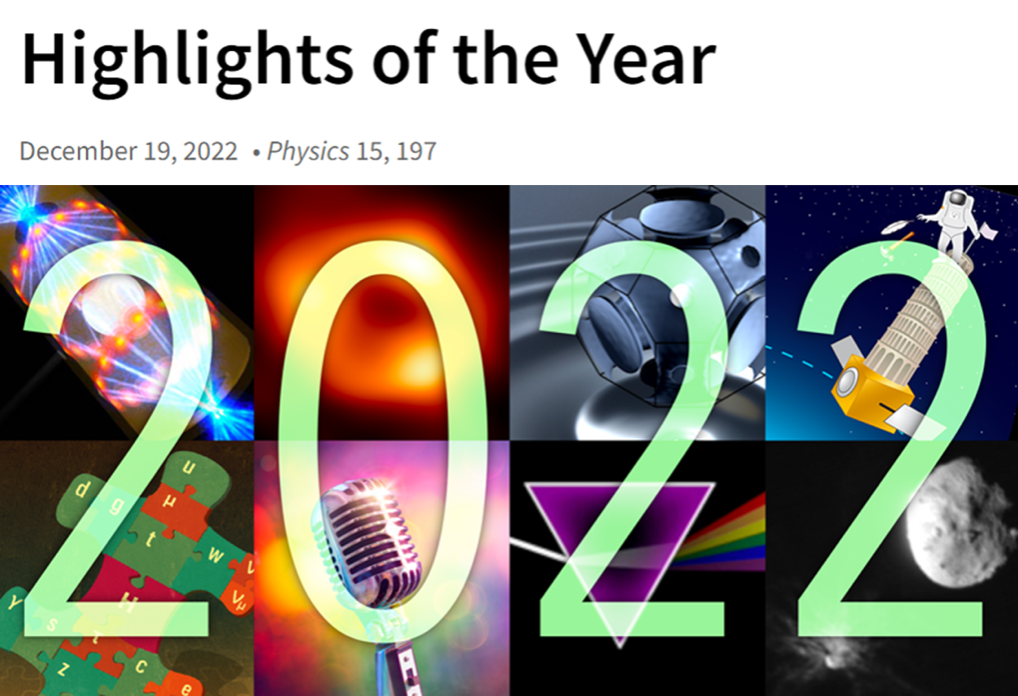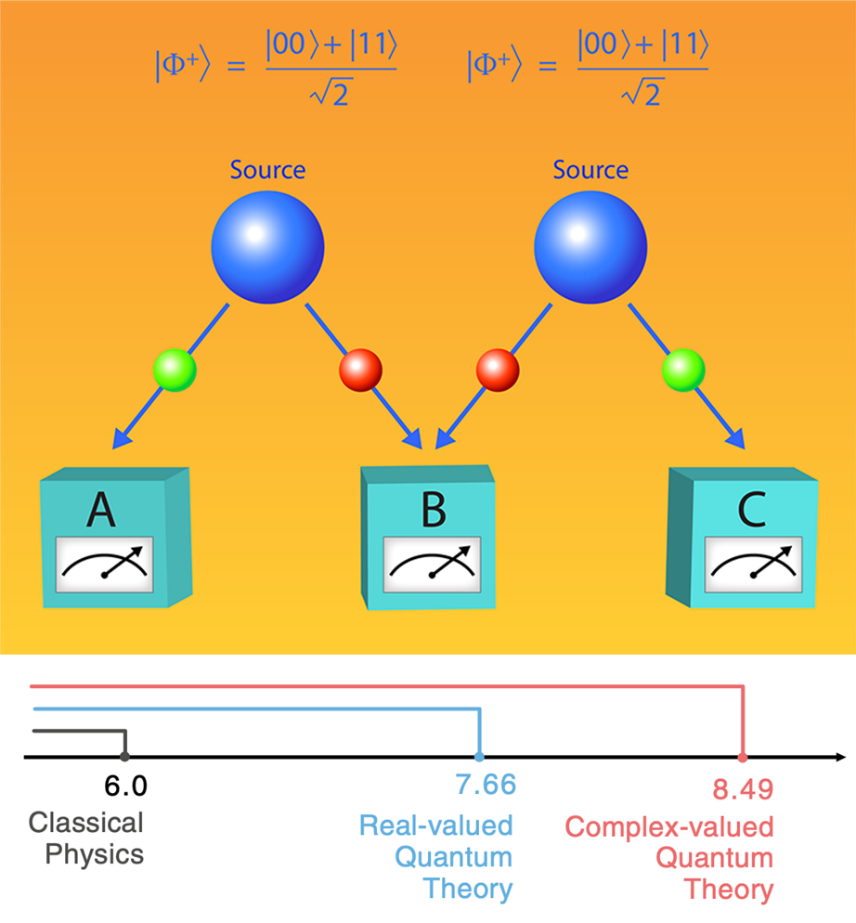Real Quantum Mechanics Test Nominated 2022 Physics’ Highlights of the Year
On 20th December 2022, American Physical Society announced ten significant advances in physics, namely highlights of the year. A series of experiments testing the necessity of utilizing complex numbers in quantum mechanics formulations performed by Prof. Pan Jianwei, Prof. LU Chaoyang, Prof. ZHU Xiaobo and Prof. ZHANG Qiang from the University of Science and Technology of China (USTC) were selected.

2022 Highlights of the year. (Image by American Physical Society)
In classical physics, complex numbers were introduced subjectively just for mathematical convenience because all the physics laws can be expressed using only real numbers. However, in quantum physics, the question of whether complex numbers are objectively real and indispensable to the standard formalism of quantum theory has long been a fundamental controversy.
A quantum game scheme to test the necessity of complex numbers in quantum formalism was proposed in 2021. In the game, three parties receive and perform independent measurements on entangled particles from two independent source. Real and complex Hilbert-space formulations of quantum theory make different predictions in this game. The experiments involved require both independence between qubits and extremely high accuracy and measurement fidelity to produce a violation of the real-number quantum theory.

Conceptual sketch of the three-party quantum game. (Image by American Physical Society)
Prof. PAN Jianwei's team carried out a series of experiments to realize the quantum game. Based on its self-developed superconducting quantum system, the team used an I-shaped Transmon qubit design to increase the spacing between qubits, reducing the non-neighbor coupling between qubits on the same superconducting chip. Two sequences of entangled pulses were used to generate two pairs of entangled states, and the qubits were distributed to the three parties involved using highly accurate quantum control technique. Each party selected the measurement it would perform independently, including a complete Bell-state measurement. The score of the game was defined as the weighted sum of the joint probability distribution of the measurements. Numerical simulations predicted an upper bound of 7.66 for optimal score of real-number formalism while the results gave a score of 8.09, which violated the upper bound by 43 standard deviations, therefore proving the necessity of complex-valued quantum formalism.
However, as the quantum bits cannot be spatially separated at distances that meet the requirements of the theoretical scheme, there were problems like locality, measurement and source independence in the experiments. To rigorously test the existence of complex numbers, the team carried out a new experiment using an entanglement-swapping photonic quantum network with five nodes. Each node was separated by a distance of at least 89 meters so that each participant would not be influenced by the measurement choices and outcomes of another participant. The results exceeded the predictions of real-valued quantum formalism by 5.3 standard deviations, further verifying the indispensability of complex numbers in quantum mechanics.
The team’s works proved that imaginary numbers are not imaginary under strict locality conditions for the first time. Not only did it deepen our fundamental knowledge of quantum physics, but also provided new insights for future exploration of quantum information.
Paper link:
https://journals.aps.org/prl/abstract/10.1103/PhysRevLett.128.040403
https://journals.aps.org/prl/abstract/10.1103/PhysRevLett.129.140401
(Written by MA Xuange, edited by ZHANG Yihang, USTC News Center)
Back
